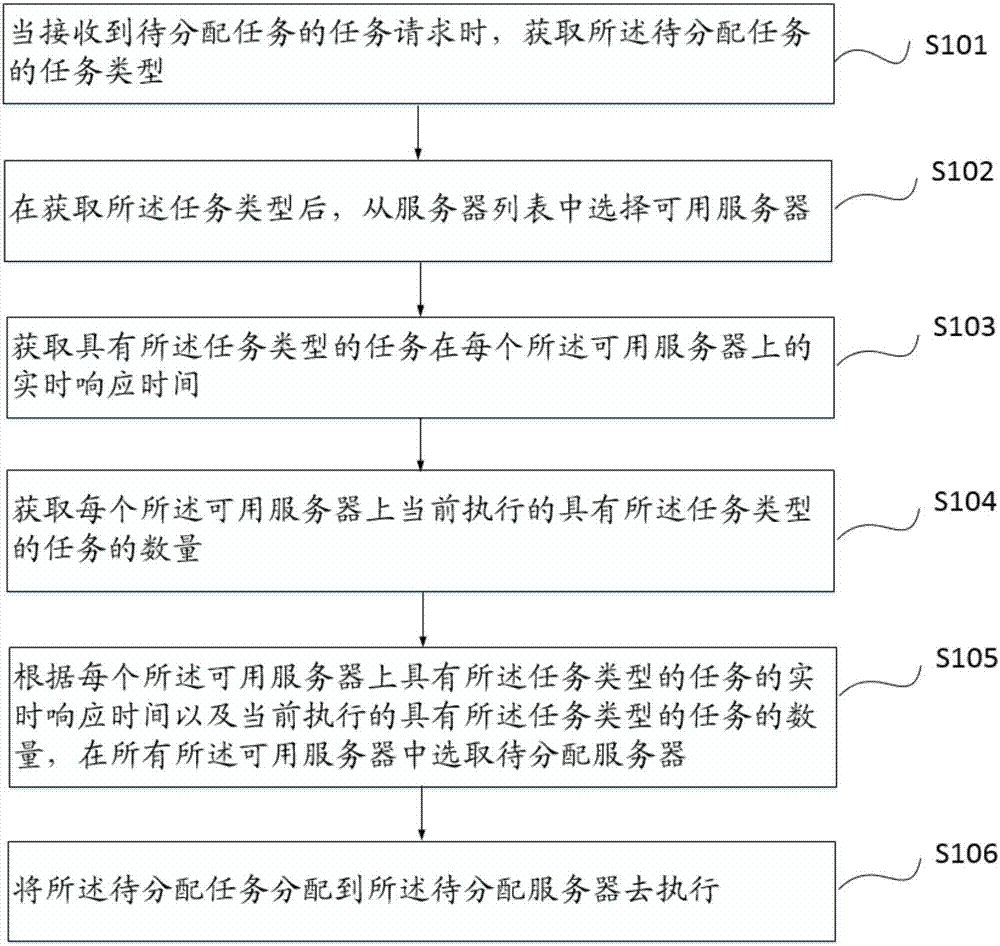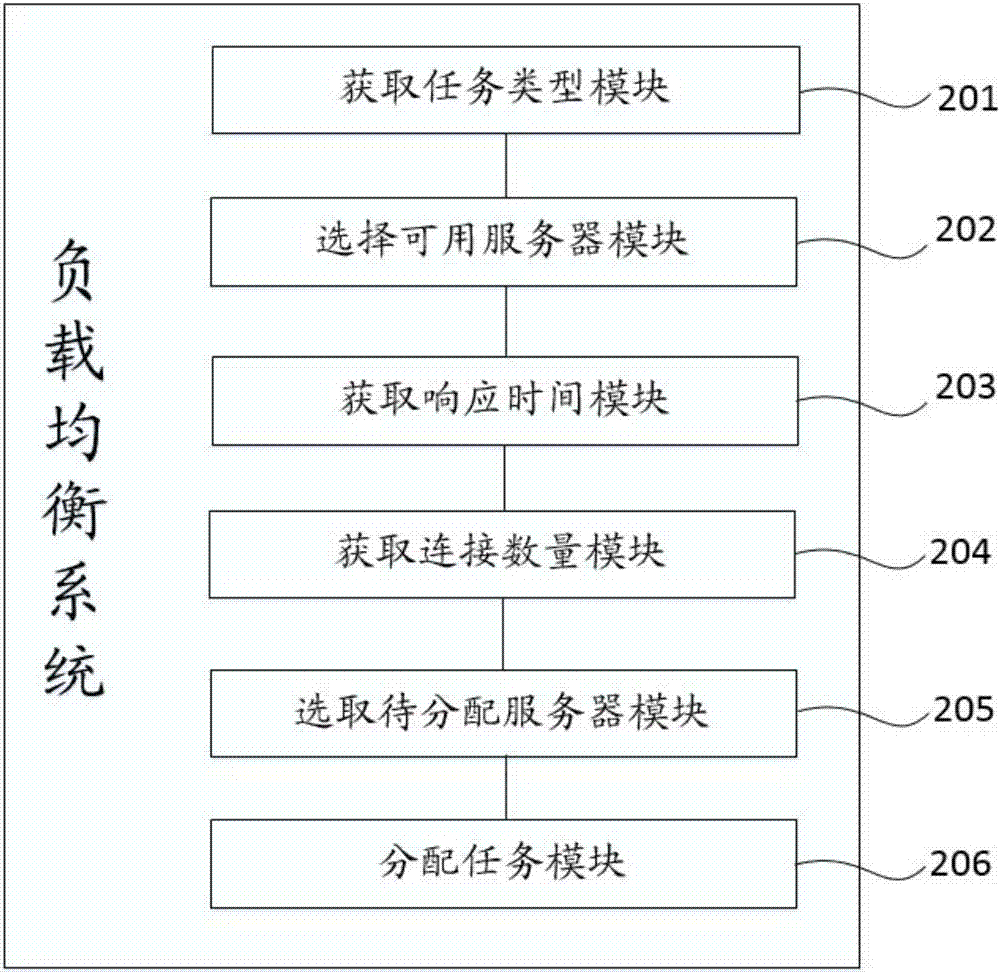Load balancing method and system
A load balancing and server technology, applied in transmission systems, digital transmission systems, electrical components, etc., can solve problems such as request tasks not being responded to for a long time, to improve load balancing effects, improve accuracy, and increase request response speed Effect
- Summary
- Abstract
- Description
- Claims
- Application Information
AI Technical Summary
Problems solved by technology
Method used
Image
Examples
no. 3 example
[0073] That is, normal servers are selected according to the request response time when assigning tasks, and servers whose request response time exceeds the server response time threshold are excluded from the selection range, thereby avoiding selecting servers in an abnormal state; The ratio of the number of executed tasks with the task type to the corresponding difference selects the server to be allocated with the highest degree of idleness and fast response speed, which effectively improves the efficiency and accuracy of the selection of the server to be allocated, thereby improving The request response speed of the network system is improved. When calculating the ratio, the task type of the requested task is considered in both the numerator and the denominator of the ratio, thereby increasing the data granularity of the ratio and further improving the accuracy of selecting servers to be allocated. The present invention also provides a third embodiment of a load balancing ...
no. 4 example
[0079] The present invention also provides a fourth embodiment of a load balancing method, the method includes steps S101 to S106 in the first embodiment of the above load balancing method, and further defines that the method further includes:
[0080] When selecting an available server from the server list, if there is no available server in the server list, an error message is returned.
[0081] That is, by returning an error message to feed back the server status in time, the waste of processing resources caused by continuing to select an available server when there is no available server in the server list is prevented.
[0082] It should be noted, figure 1 The flow chart shown is only to express the process steps of an embodiment of the present invention, but the process steps of the present invention are not limited to be executed strictly in the order of S101-S106. For example, S103 and S104 can be executed in parallel.
[0083] The present invention also provides a f...
PUM
 Login to View More
Login to View More Abstract
Description
Claims
Application Information
 Login to View More
Login to View More - R&D
- Intellectual Property
- Life Sciences
- Materials
- Tech Scout
- Unparalleled Data Quality
- Higher Quality Content
- 60% Fewer Hallucinations
Browse by: Latest US Patents, China's latest patents, Technical Efficacy Thesaurus, Application Domain, Technology Topic, Popular Technical Reports.
© 2025 PatSnap. All rights reserved.Legal|Privacy policy|Modern Slavery Act Transparency Statement|Sitemap|About US| Contact US: help@patsnap.com


